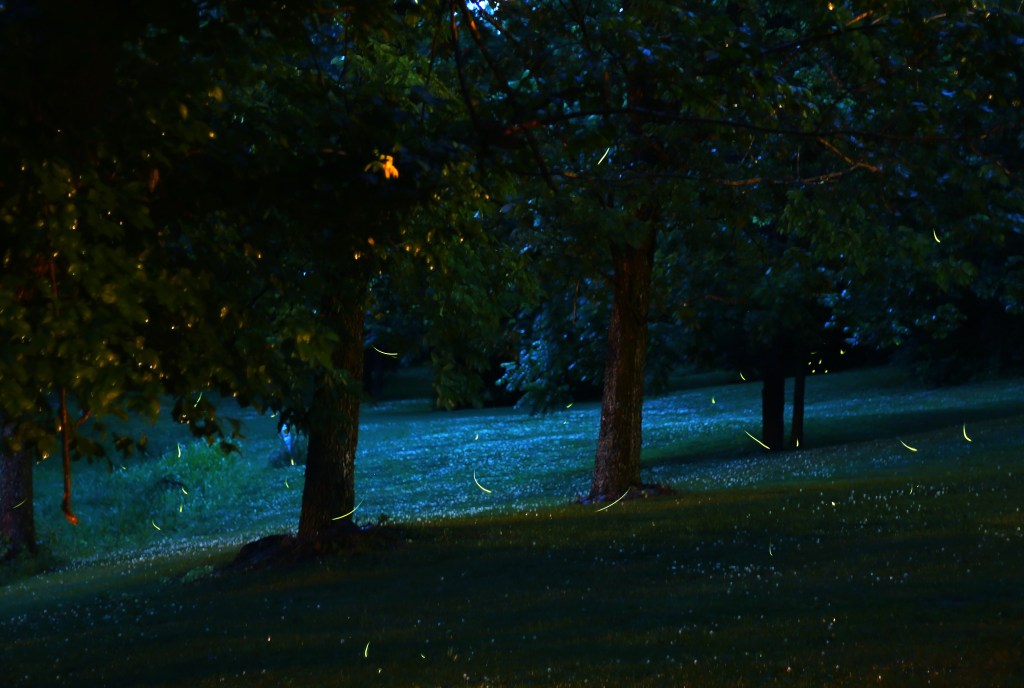Fireflies may be disappearing, but you can help
Published 7:27 am Monday, June 26, 2017

- Composite photo by Ben Kleppinger
Firefly paths are seen illuminated near a creek in Stanford Friday night.
Not many things are as synonymous with a summer night in Kentucky as fireflies.
Also known as lightning bugs, many people have fond memories of chasing these beautiful insects as they lit up their back yards. It was so much fun to catch them and watch them light up in your hand.
When I was young, they seemed like magic. Now, I know it’s bioluminescence. But when I see them lighting up and flying around, they still seem magical.
This year, we seem to have a lot more fireflies at my house than we have in the past few summers. Noticing all of these fireflies made me want to take a picture of them. It was no easy task, because their lights flash on and off so quickly. And while they are small, they are really fast. Taking their photo took lots of patience, lots of tries — and a tripod. I ended up getting some good photos and was able to combine them to show all the individual fireflies lighting up at the same time.
But while fireflies are plentiful around my house, I was surprised to find out that many scientists think that firefly populations are on the decline. The sad part is that their decline may be due to people. Some of the main causes of their decline worldwide is loss of habitat, pollution in the waterways, light pollution and use of pesticides.
There are 2,000 known species of fireflies. Fireflies are an indicator species, which means that depending on how their populations are doing, we can tell the health of their surrounding environments. This means that if you have lots of fireflies in your area, you know that you have healthy water and soil.
Humans might be causing issues for the fireflies, but if we are, we can still take action to make things better. First things first — some scientists are trying to nail down if and just how much humans might be impacting the survival of fireflies.
The University of Clemson has started the Vanishing Firefly Project. They are recruiting people to be citizen scientists and help collect data for the study. To participate, you can download their app to your smartphone, and then use the app to count fireflies for 60 seconds. In order to count accurately, you’ll learn to identify different firefly flash patterns.
For more information about the project, and to watch a very informational video, including specifics on how to count the fireflies and firefly flash patterns, visit bit.ly/FireflyProject.
Things you can do to help fireflies include turning off your outside lights at night. Fireflies use their lights primarily for mating and with lots of night-time light pollution, they may be unable to see the glow of other fireflies.
Also — skip the pesticides. They help with pests, but they are harmful to lots of beneficial insects, including fireflies.
You can add a water feature to your yard. Lots of fireflies like water, such as streams and ponds. Shrubs, grasses and other natural areas provide daytime shelter for adult fireflies.
You can catch fireflies in your hands if you like but don’t keep them in jars. They only have a very limited number of days as adult fireflies and it’s very important that they mate in those few days so they can make more fireflies. If a bunch of people put some fireflies in jars and keep them contained for a few days, it can substantially reduce the local firefly population now and into future years.
I think it’s best to watch fireflies and maybe catch some on your hand, but then release them back into the night so they can keep on lighting up the night and find a mate.
Amanda’s Animal Fact:
Some fireflies are aquatic. Their larvae live in the water and even have gills.






